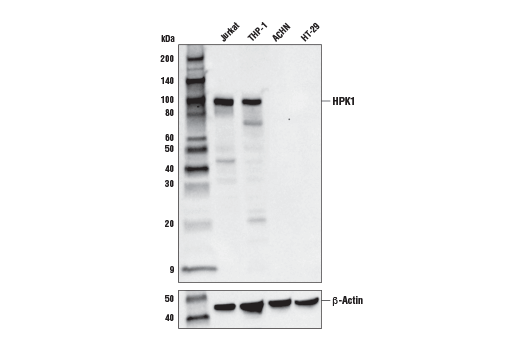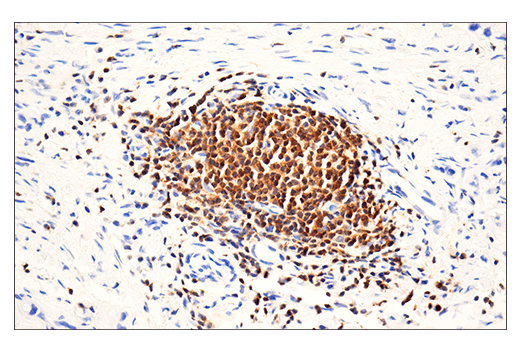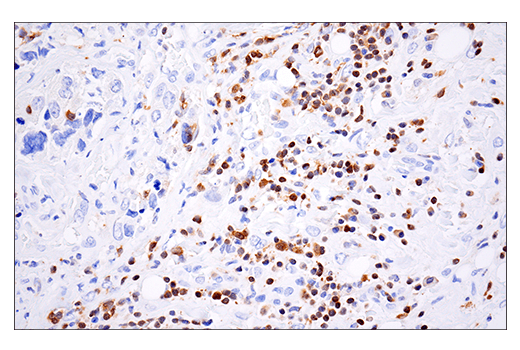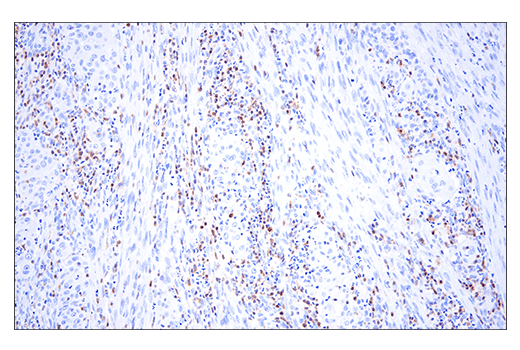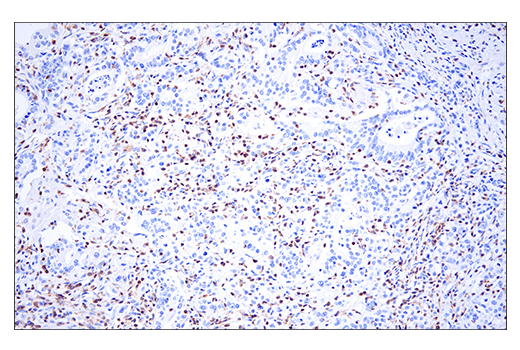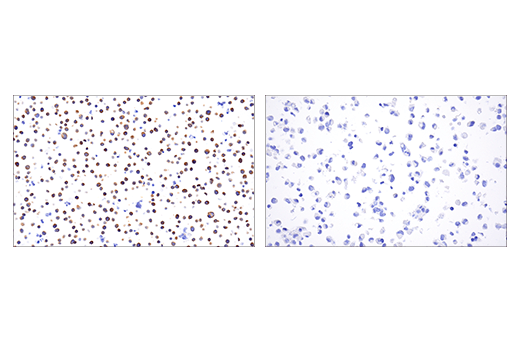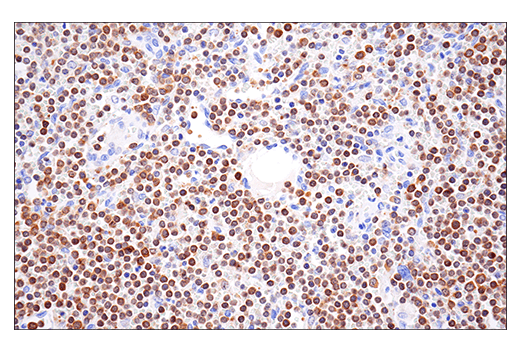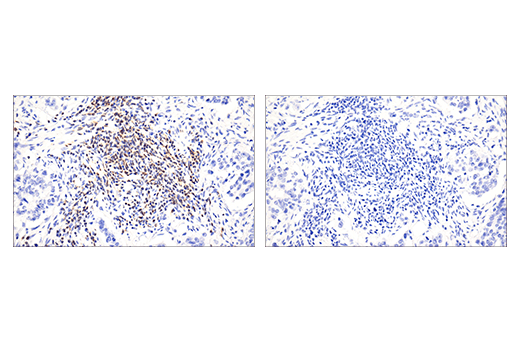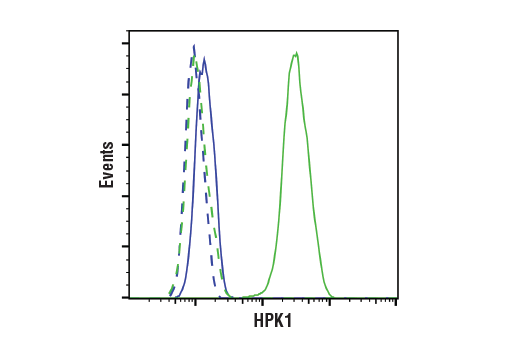WB, IHC-Bond, IHC-P, FC-FP
H
Endogenous
97
Rabbit IgG
#Q92918
11184
Product Information
Product Usage Information
This formulation is ideal for use with technologies requiring specialized or custom antibody labeling, including fluorophores, metals, lanthanides, and oligonucleotides. It is not recommended for ChIP, ChIP-seq, CUT&RUN or CUT&Tag assays. If you require a carrier free formulation for chromatin profiling, please contact us. Optimal dilutions/concentrations should be determined by the end user.
Formulation
Storage
Specificity / Sensitivity
Species Reactivity:
Human
Source / Purification
Monoclonal antibody is produced by immunizing animals with a synthetic peptide corresponding to residues near the amino terminus of human HPK1 protein.
Background
Hematopoietic progenitor kinase 1 (HPK1) is a member of the germinal center kinases that is predominantly expressed in hematopoietic cells. HPK1 is a key component linking T or B cell receptors to SAPK/JNK and IkappaB kinase pathways in lymphocytes (1-3). Through its proline-rich motif, HPK1 associates with multiple SH3 domain-containing adaptor proteins, including GRB2, Nck, Crk, SLP-76, and BLNK. Phosphorylation of Tyr379 by Syk is necessary for HPK1 association with BLNK and SLP-76, as well as for HPK1 activity (4,5). Caspase cleavage of HPK1 also modulates the biological function of HPK1 (3,6,7).
- Liou, J. et al. (2000) Immunity 12, 399-408.
- Ling, S. et al. (1999) Mol. Cell. Biol. 19, 1359-1368.
- Arnold, R. et al. (2001) J. Biol. Chem. 276, 14675-14684.
- Tsuji, S. et al. (2001) J. Exp. Med. 194, 529-539.
- Sauer, K. et al. (2001) J. Biol. Chem. 276, 45207-45216.
- Chen, Y. et al. (1999) Oncogene 18, 7370-7377.
- Schulze-Luehrmann, J. et al. (2002) Blood 100, 954-960.
Species Reactivity
Species reactivity is determined by testing in at least one approved application (e.g., western blot).
Applications Key
WB: Western Blotting IHC-Bond: IHC Leica Bond IHC-P: Immunohistochemistry (Paraffin) FC-FP: Flow Cytometry (Fixed/Permeabilized)
Cross-Reactivity Key
H: human M: mouse R: rat Hm: hamster Mk: monkey Vir: virus Mi: mink C: chicken Dm: D. melanogaster X: Xenopus Z: zebrafish B: bovine Dg: dog Pg: pig Sc: S. cerevisiae Ce: C. elegans Hr: horse GP: Guinea Pig Rab: rabbit All: all species expected
Trademarks and Patents
Limited Uses
Except as otherwise expressly agreed in a writing signed by a legally authorized representative of CST, the following terms apply to Products provided by CST, its affiliates or its distributors. Any Customer's terms and conditions that are in addition to, or different from, those contained herein, unless separately accepted in writing by a legally authorized representative of CST, are rejected and are of no force or effect.
Products are labeled with For Research Use Only or a similar labeling statement and have not been approved, cleared, or licensed by the FDA or other regulatory foreign or domestic entity, for any purpose. Customer shall not use any Product for any diagnostic or therapeutic purpose, or otherwise in any manner that conflicts with its labeling statement. Products sold or licensed by CST are provided for Customer as the end-user and solely for research and development uses. Any use of Product for diagnostic, prophylactic or therapeutic purposes, or any purchase of Product for resale (alone or as a component) or other commercial purpose, requires a separate license from CST. Customer shall (a) not sell, license, loan, donate or otherwise transfer or make available any Product to any third party, whether alone or in combination with other materials, or use the Products to manufacture any commercial products, (b) not copy, modify, reverse engineer, decompile, disassemble or otherwise attempt to discover the underlying structure or technology of the Products, or use the Products for the purpose of developing any products or services that would compete with CST products or services, (c) not alter or remove from the Products any trademarks, trade names, logos, patent or copyright notices or markings, (d) use the Products solely in accordance with CST Product Terms of Sale and any applicable documentation, and (e) comply with any license, terms of service or similar agreement with respect to any third party products or services used by Customer in connection with the Products.
